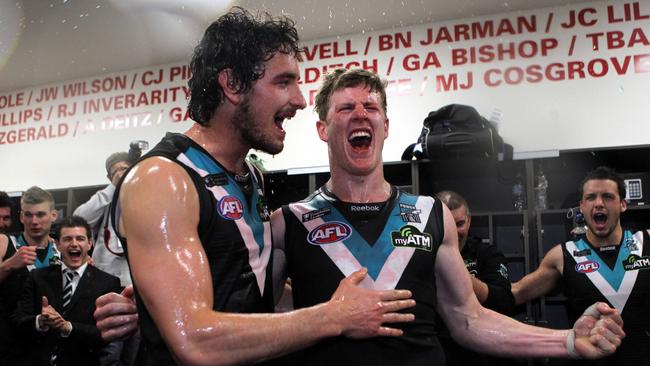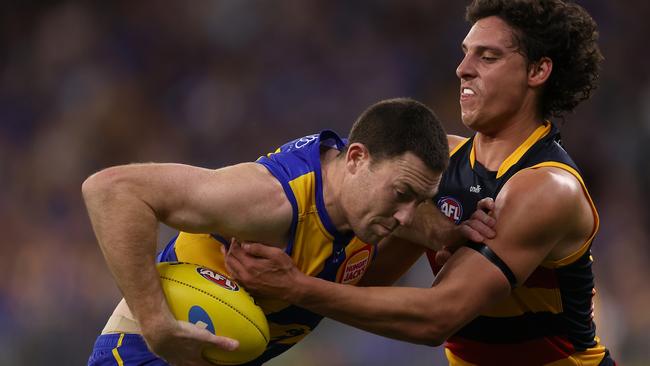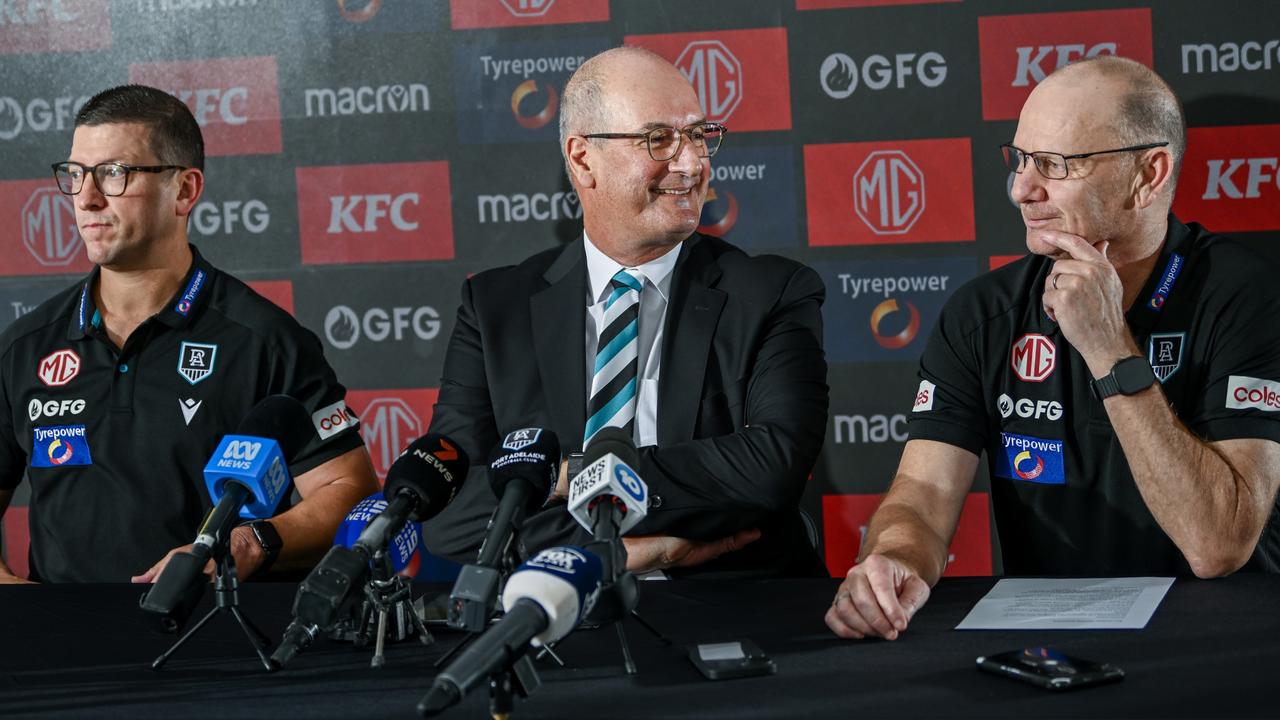There should be no separate category for AFL rookies | Graham Cornes
The AFL has proved it doesn’t lack compassion — except when it comes to its rookies, writes Graham Cornes.
Opinion
Don't miss out on the headlines from Opinion. Followed categories will be added to My News.
The AFL is a great organisation. It is the best professional competition in the country.
Apart from the obvious sporting entertainment it provides, the AFL, its clubs and its players give great inspiration and contribute immensely to social welfare.
A great number of charities benefit from the support of the AFL industry, be that by the AFL’s endorsement, or that of the clubs or individual players.
It can be argued that no other organisation has contributed more significantly to major social issues like reconciliation and gender inclusion than the AFL.
The point being made here is that the AFL as an industry does not lack compassion.
Why then, does it condone the bizarre and cruel treatment of the club’s rookie-listed players? Why do we even have a category such as “rookie”?
It seems that the only reason is that it allows clubs more access to players without having to pay then a fair wage and not have to adequately compensate them when they are summarily dumped as James Borlase was recently.
TELL US WHY IN THE COMMENTS
It’s not as though he had been languishing on the Crows list with no prospects of getting an AFL game. Borlase played the last four games of the season and looks ready to consolidate a position as a defender.
Given the Crows shortage of key defenders that seemed increasingly likely.
It might be some consolation that the Crows have said they will redraft him.
They cut Will Hamill too after 38 games and a good contribution from him in the second half of the season.
Adelaide has also told him they’ll redraft him – as a rookie – but that won’t ease the humiliation and the uncertainty.
The rookie contract comes with significantly less money and virtually no security.
Port Adelaide delisted three of its rookie-listed players: Trent Dumont, Brynn Teakle and Nathan Barkla.
They don’t seem as hard done by as Borlase and Hamill.
Trent Dumont has been in the system for 8 years now, having played over 100 games for North Melbourne. Brynn Teakle has had his injury problems and Nathan Barkla, having come from Woodville-West Torrens through Port’s next generation academy, never threatened for selection at AFL level.
Still, it’s tough to hear the words and realise that the dream may be over.
The AFL has never fully explained why there needs to be a separate category for rookies. Complicating it further, there are three different categories of rookies and those categories have been changed over the years.

Initially, back in 1997, there was a rookie draft which enabled clubs to list players between the ages of 18-23.
The rationale was that they could replace players who were struck down with a long-term injury.
Ten years later, the AFL introduced a mature-age rookie program for players over 23 who had not been previously drafted.
Three years later they removed any age restrictions.
We then had two categories of rookie: the category A rookie who was eligible for AFL selection; and a category B rookie who was eligible for AFL selection as a replacement for a player with a long-term injury.
Why the difference?
Then, following the concessions that had been granted to the teams in NSW and Queensland to establish Next Generation Academies, all clubs were allowed to establish Next Generation Academies, the objective of which is to increase the talent pool of indigenous and multicultural players.
James Borlase, by that strange quirk of fate was drafted through the Crows Next Generation Academy because he was born overseas.
Despite the sporting backgrounds of his famous parents, Jenny and Darryl, four-time Port Magpies premiership player and captain, the Crows were able to list him and select him through its Next Generation Academy.
Then the AFL introduced this much-criticised, and hopefully short-lived, mid-year rookie draft that so upsets our local competitions.
The one burning question that the AFL has never satisfactorily answered is: “Why do we need separate categories for rookies anyway?
AFL clubs are allowed a total list size of 44 players, including primary list and categories A and B rookies.
They are allowed a minimum of 36 and a maximum of 38 “primary-list” players.
If the primary-list consists of 36 players a club is allowed six category A rookies and two category B rookies.
If the club has the maximum 38 primary-list players they are allowed four category A rookies and two category B rookies.
Confused? Who wouldn’t be?
The only conceivable reason for such a complicated system is that it allows the clubs to pay the rookie less than a listed player.
In a system where the average wage is now over $400,000 it is a disgraceful exploitation of a footballer’s desperate ambition.
It would be much simpler and fairer if the AFL did away completely with rookie lists and increased the number of players a club can have on its primary list – and paid them appropriately.
Anyway, if the recruiters and list managers were doing their jobs properly they wouldn’t need a safety-net of rookie lists.
So many great players have emerged from rookie lists when they clearly should have been on a club’s primary list.

At the Crows, Rory Laird a three-time club champion was a rookie. Port’s retired captain, Tom Jonas, was a rookie, as was all-Australian Dan Houston.
Across the broader AFL competition some of the very best were rookies.
Six-time all-Australian Dean Cox was initially listed as a rookie, as was Brownlow Medallist, Matt Priddis. Premiership captain Nick Maxwell and the spiritual leader of the Swans in their 2005 premiership, Brett Kirk were rookies.
There is absolutely no justifiable reason to have a separate category.
All it does is allow a club to easily delist a player with little regard for consequence or expense.
Away from match-day, the toughest job a coach has is to tell players they are no longer wanted.
But coaches don’t always do it.
In this day and age of football managers, directors of football and list managers, the responsibility can fall to one of those club officials, but it should be done by the coach.
Some players accept the news in good spirit, realising that their time has come.
Others are angry and bursting with the frustration of not getting a “fair go”.
They leave seeking new opportunities at another club, determined to prove you wrong.
The toughest ones to handle are those whose emotions override control and break down. It’s understandable. Their dream has been shattered, sometimes unfairly taken away. AFL clubs today have counsellors to deal with mental trauma of being sacked from the job they love and have been well paid for.
Dr Dan Pronk, a retired army doctor who served five years in special operations, including four tours of Afghanistan, with more than 100 combat missions, spoke on Friday morning at the Military and Emergency Services Health Australia’s Remembrance Day Breakfast on the topic of transitioning from defence forces to civilian life.
Soldiers belong to their “tribe” and their need to belong is fulfilled.
One couldn’t help but make the comparison.
Footballers, or any athlete in a team sport, have a similar sense of belonging.
Suddenly it is taken away. If they are lucky they get a chance to say goodbye, but that doesn’t ease the trauma.
If they are really fortunate the club will re-list them as the Crows have told James Borlase and Will Hamill they will.
If they are worthy of relisting, they are worthy of a spot on the primary list.
There should be no separate category.




